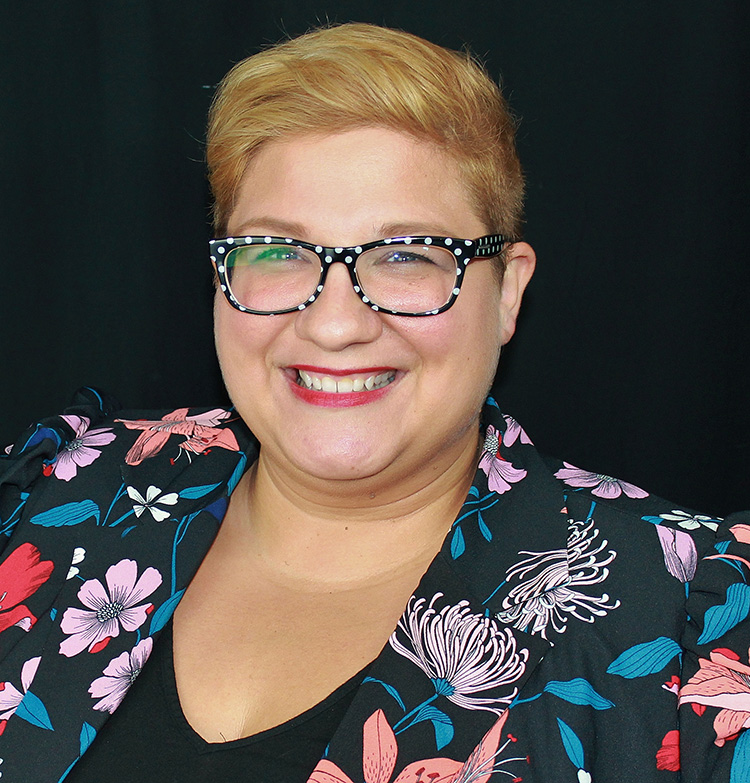
Retention Starts in Admissions
By Theresa Miulli, Campus Director, Compass Rose Foundation
Retention is a “hot topic” for all types of institution. Whether it is in a traditional university setting, or a vocational, career education arena, retention is a key area for all education organizations, as it is the most important determining factor of a school’s success. Without retention, there is no graduation. Without student completion, we must ask ourselves – what are we doing here? The following paragraphs aim to give you, school owners, leaders, administrators and faculty, a fresh perspective on retention initiatives. As a conference speaker, Campus Director, and previous member of the faculty, I have been witness to both incredible and disastrous retention discussions and programs. Almost every school continually looks for new ways to inspire students to attend and complete. Yet, as important as it is, it seems to be one of the most difficult areas for many institutions.
In order for schools to truly conquer retention problems, it is important that every institution think beyond their traditional initiatives and embrace more innovative techniques for retaining students. Often schools segregate themselves and there is a strong division seen between administration and faculty. While these silos are seen as traditional and a function of how education has always operated, this dissection prohibits schools from building a cohesive culture that promotes unity amongst staff and students alike. In short, community builds retention.
Without a culture of community, it is likely students will not feel accountable for the completion of their program. Community builds relationships. Relationships build accountability.
In a perfect world, a student would complete because it is important to them. However, we all know sometimes that is not enough! Sometimes, the “disappointment” factor is enough to push lingering students to recommit to their goals and continue their education. Think back on your own history. Was there ever a teacher or mentor that you felt would be “disappointed” in you if you didn’t finish something? Did that push you to go a little further? A strong culture of community builds a professional intimacy that inspires students to go the distance. But how does a school build that culture?
Break down those walls! In order for a school to successfully build a community culture, stakeholders must first see that they are all responsible for community-building. I visit many schools, and often I hear administrators say “retention is the job of the faculty,” or the faculty says things like “well if admissions would enroll better students, I could retain them.” This type of finger pointing and blaming will never lead to stellar graduation rates. Retention is everyone’s job. Every individual, from the janitor, to the president, plays a part in retaining students. Buy-in to a holistic process is important if you expect your team to unite and work towards better student outcomes. Only as a single entity can a campus increase retention numbers. Working as a team has a much higher impact than working towards this goal as individuals.
How then, can you build a community where all departments are working towards one, holistic goal? Building and implementing retention initiatives into all sectors of your school is a necessity when establishing your school community. Campus leadership cannot expect staff to meet new expectations if these expectations are not set clearly, and with guidelines to successfully achieve them. Blending departments together is a sticky, obstacle-burden task. However, when the transition is complete, and your process is universally understood, your campus will see great rewards in student outcomes, satisfaction, and graduation rates!
The first point of touch for the student is admissions – so let’s start here. How can your admissions department take part in the retention process? To tackle this, think outside of the normal admissions progression of a student applying, meeting with a representative, and learning about the program. Why not, instead, involve your faculty?
Faculty-driven tours are one of the most effective recruitment tools, for a variety of reasons.
First, nobody has the ability to sell your school or programs better than the people that teach the curriculum. A faculty member will show more passion than any admissions representative could because the instructor lives and breathes their program. Second, a faculty-driven tour provides an opportunity for faculty members to set expectations for prospective students. Having a clear understanding of the school’s expectations will result in more committed, cognizant students. After all, we can’t expect students to reach an expectation we haven’t actually set for them. Sound familiar? Expectation setting is key in any educational environment. So start setting them from day one, in the admissions process! As a part of this campus tour, faculty can also provide students with a program review and answer student questions concerning the program, the structure, and what will be taught. Why not take advantage of all that knowledge?
I know what you are thinking. What if the faculty member messes up? What if they convince the student they aren’t right for the program? What if the faculty member loses your potential enrollment? These could be risks if you don’t train and prepare the right members of your faculty to deliver these tours. To prepare for this, provide guidelines for faculty and conduct mock tours with the admissions representatives so that the representatives have an idea about what information the faculty member can provide. If admissions and faculty work together, the partnership could boost enrollment, as well as secure students through graduation at your institution.
Another common department found in career-orientated schools is a student services division. Student services often provide resources in areas of concern, such as transportation, child care, health and wellness, and in many institutions, career placement. To successfully retain students, this department should be incorporated into all functions of a student’s path.
Consider this – as part of the admissions process, schedule time for the prospective student to meet with a student services representative.
By educating the forthcoming student about the available resources at the outset, they are likely to reach out for help when obstacles arise throughout their program. Additionally, faculty can partner with student services by having representatives enter the classrooms and provide workshops and information related to resume building, community resource seminars, or even host special guest speakers.
Once a student has made it through the admissions and financial aid process, the next step is typically some type of orientation. What does your orientation look like? Does it stitch students into your culture? Does it inspire them to start their education, or just provide an opportunity to get their identification card, tour the campus again, and perhaps review school policy? Orientation is your opportunity to impact the students and connect! This is your chance to blend students into your community, further bridging accountability measures between the student and the institution. Consider enhancing your orientation with creative, millennial driven engagement initiatives to include: unique hashtags, icebreaker activities, scavenger hunts, funny signs, and Instagram challenges. Students want something to talk about! Build your brand, engage students, and make them feel they are a part of your community.
In most institutions, once orientation is complete, and classes have begun, administration bows out and it is up to the faculty to now retain the students that have been enrolled in their classrooms. I have to ask the question – why? Why shouldn’t admissions take an active part in the retention of the student throughout their education? Why shouldn’t financial aid be more engaged in student outcomes? Do we believe there is any correlation between student dropout rate and the level of institution community engagement throughout their program? I believe there is!
Admission representatives can easily be exercised into the classroom experience. Who better to teach customer service, professionalism, and networking skills? Financial aid officers can also be inserted into the classroom arena, providing workshops on loan management, budgeting, and default management. Integrating the admissions and financial aid departments into the classrooms unifies your team, and shows students that from start to finish, your entire community is invested in their success. As mentioned above, student services have a plethora of opportunity in the classroom and can help improve student retention rates through resource knowledge and support.
This effort takes creative scheduling and a prioritization of retention outcomes; however, these initiatives can ultimately boost graduation rates significantly.
I know, I know. How on earth are you going to convince an admissions representative, a financial aid officers and a student services advisor to not only step into a classroom, but also build engaging, informative lessons? How will you convince a faculty member to step outside the teaching world, and insert themselves into the admissions process? If each team member prioritizes the mission of retention, then the answer is simple. If you have the right people in place, they should all be focused on one important mission – working as a team to provide the best environment and education for students. I have been lucky enough to be part of an epic transformation on my campus. For two years, we focused on training our team, unifying our efforts, and building a community. Some ugly decisions had to be made; however, I was able to witness our graduation rates jump 30 percent in a three-year time frame. We went from fighting to meet benchmarks, to reporting with ease. Even better though? We went from disgruntled students, to happy, smiling students. Your administration needs to trust that this blending of college departments will make a positive impact on students. I am a believer, as I have seen how unifying transforms student outcomes.
How about you? Have I made you a believer yet? I encourage you to meet with your teams immediately and discuss a plan for integration. How will you break down your walls between administration and faculty? What innovative ideas will you come up with to cross departments to retain students?
THERESA MIULLI currently sits as the Campus Director at Sunstate Academy in Fort Myers, Florida. With a Masters in Nonprofit Management and a Vocational Education in Cosmetology, she has a unique point of view, allowing her to manage a campus from the viewpoint of a Technician, Faculty Member, and an Administrator. Theresa is currently a Doctoral student at the University of Florida, studying Higher Education Administration, focusing her dissertation on Vocational Education and Gainful Employment legislation. Theresa’s experience has led her to be invited to speak at a variety of conferences, to include speaking for the Career Educator Alliance, the American Association of Cosmetology Schools, and for the Accrediting Commission of Career Schools and Colleges. Her focus continues to be educator professional development, curriculum development, and instructional design. As a school leader, she continues to push to increase student outcomes through innovative education initiatives and strong teambuilding.
Contact Information: Theresa Miulli // Campus Director // Compass Rose Foundation // 239-292-6325 // tmiulli@hotmail.com // tmiulli.wixsite.com/theresamiulli // https://www.linkedin.com/in/theresamiulli/ // https://www.instagram.com/theresamiulli/











